The mosaic cycle of the Palatine Chapel, as in a
biblia pauperum
, tells the story of Salvation,
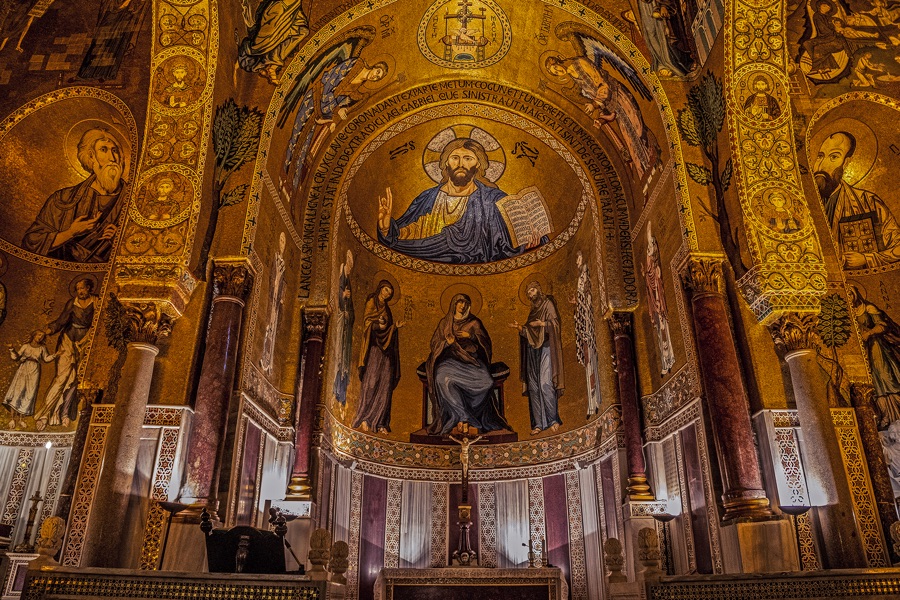 through representations taken from the Old and New Testaments,
through representations taken from the Old and New Testaments, 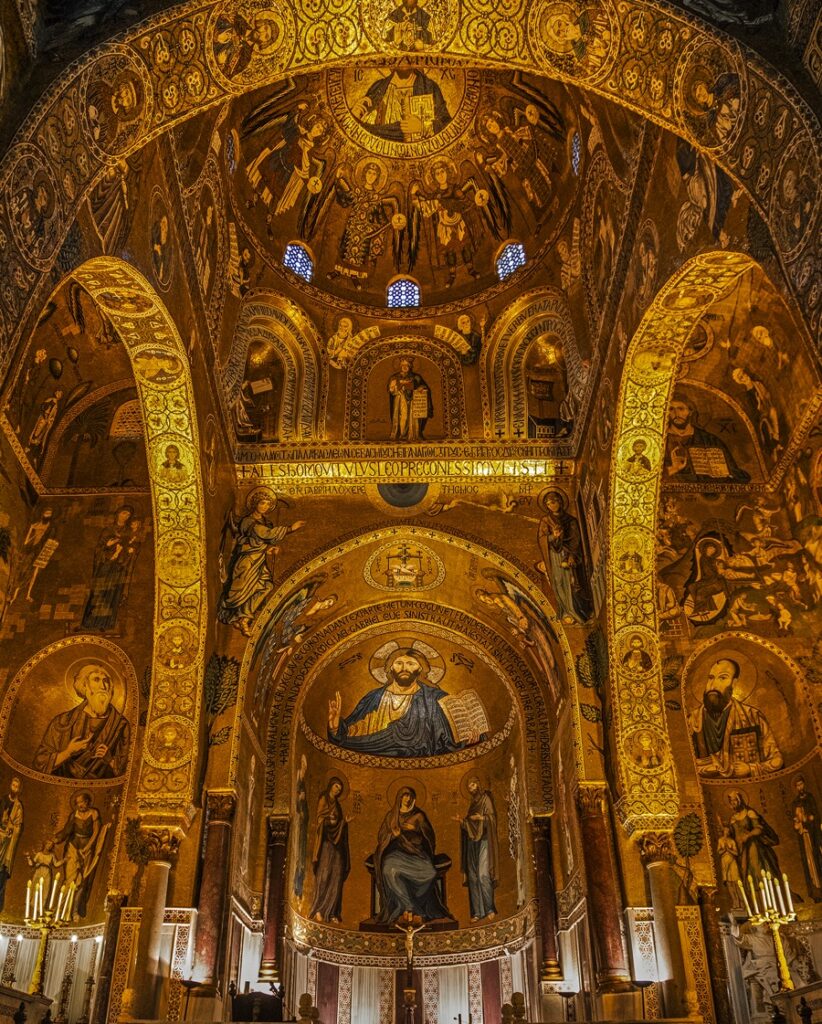 which culminate in
Christ Pantocrator
which culminate in
Christ Pantocrator
, surrounded by an angelic court, in the dome.
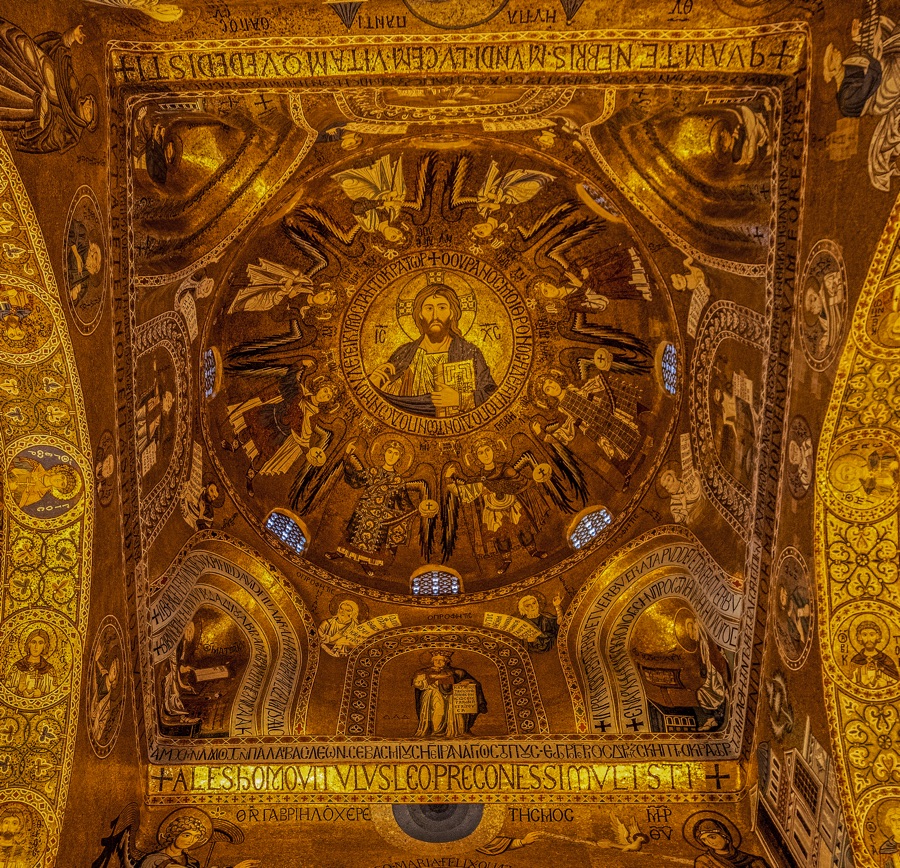 The mosaic work is part of King
Roger II
The mosaic work is part of King
Roger II
‘s political and ideological programme. Immediately after his coronation in Palermo, he planned to build a chapel, reserved for the sovereign and his family, inside the Royal Palace.
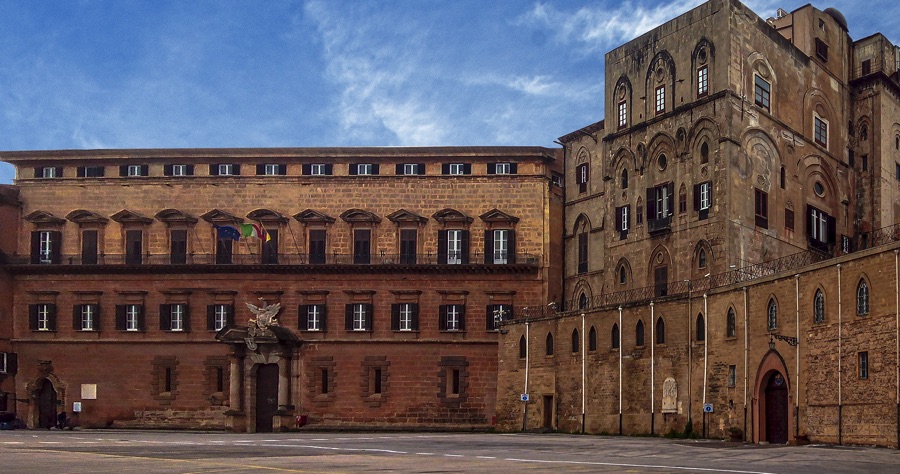 The mosaic cycle is the result of a mixture of different classical artistic influences, especially Byzantine. The craftsmen, probably from Byzantium, created a domus where the shining gold of the tiles becomes an allegory of the glorious reign of Roger.
The mosaic cycle is the result of a mixture of different classical artistic influences, especially Byzantine. The craftsmen, probably from Byzantium, created a domus where the shining gold of the tiles becomes an allegory of the glorious reign of Roger.
The representations, in an motionless and unnatural style, narrate timeless scenes, in a blaze of gold and bright colours where the King of Kings, Christ, the centrepiece of the entire mosaic cycle, recurs several times: blessing and within a tone in the dome; 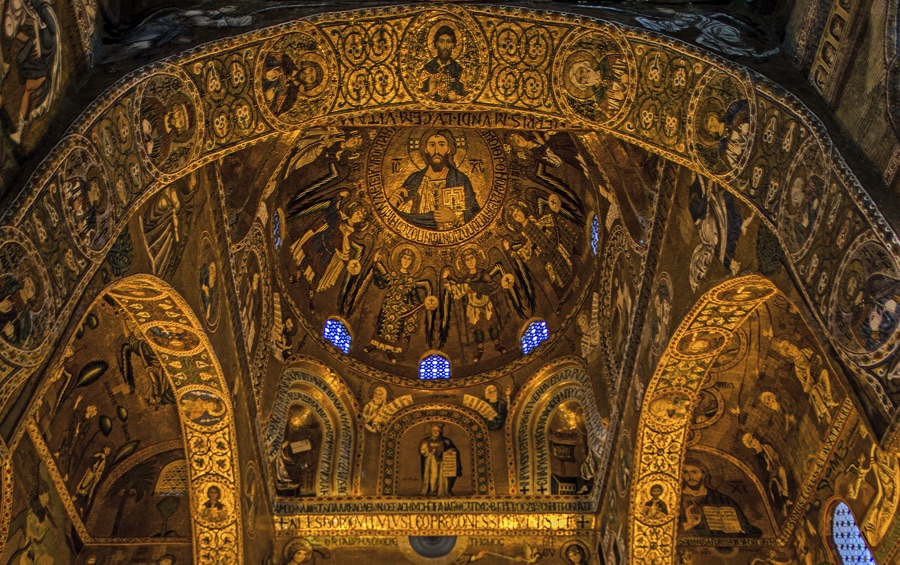 stern and half-length in the central apse;
stern and half-length in the central apse; 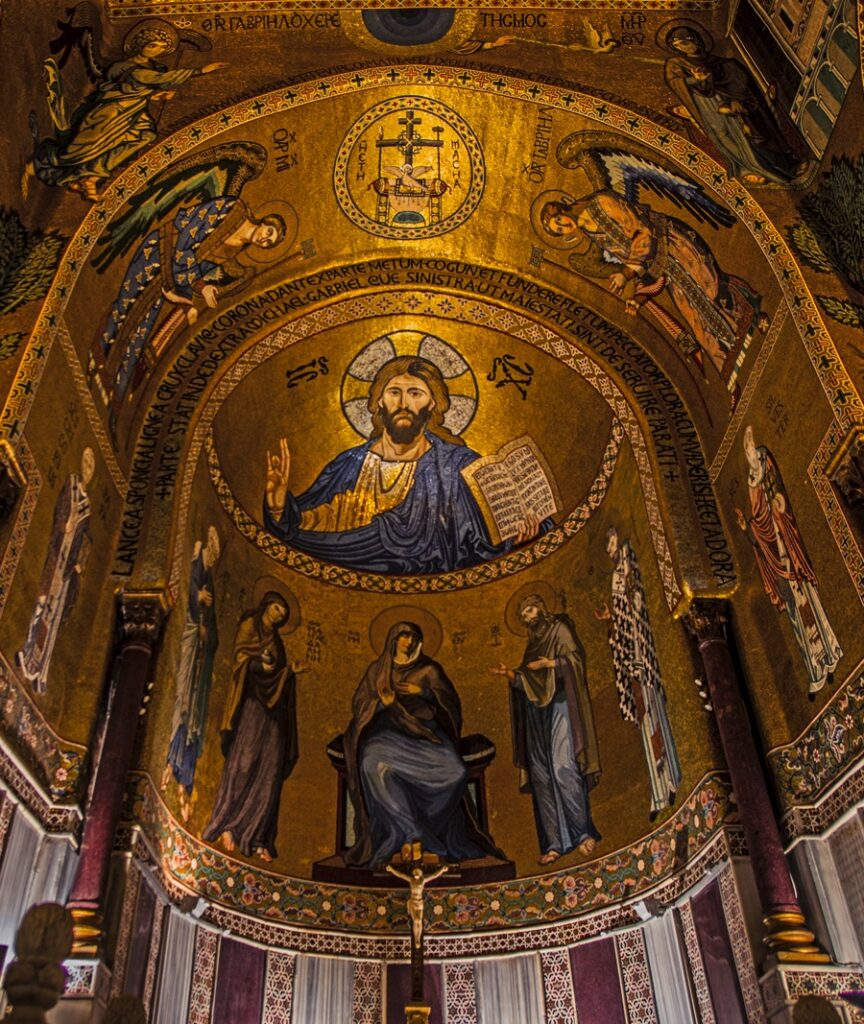 in majesty between Saints Peter and Paul in the part above the royal throne
in majesty between Saints Peter and Paul in the part above the royal throne 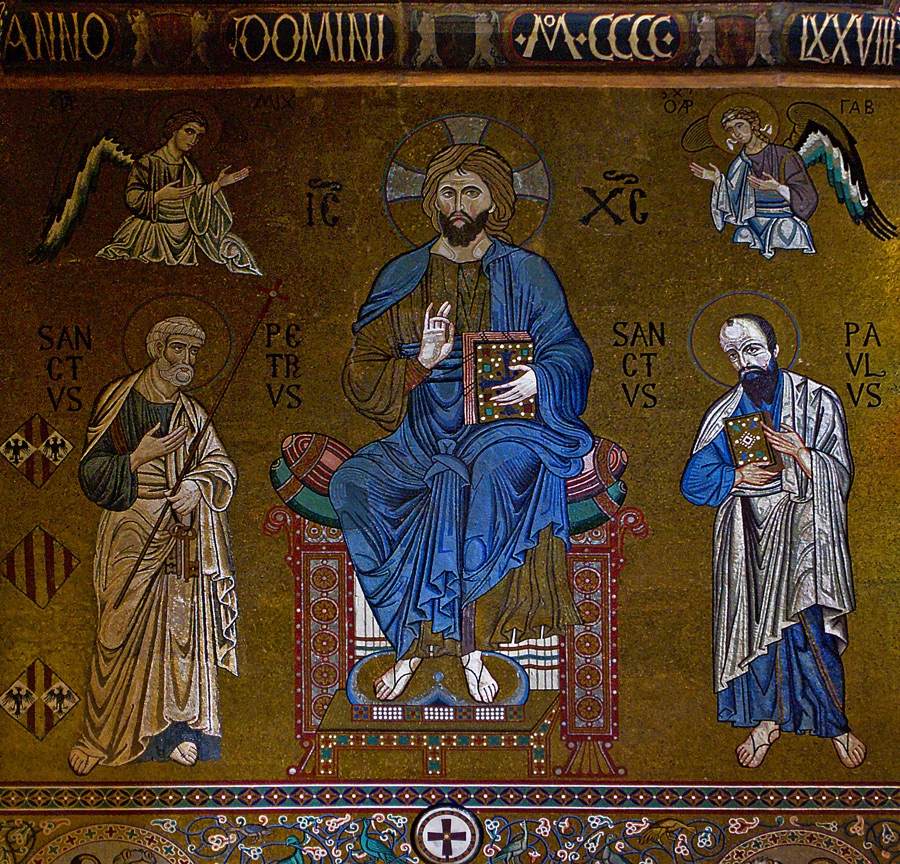 and in the space in front of the apsidiole dedicated to Saint Paul. Scenes from Genesis,
and in the space in front of the apsidiole dedicated to Saint Paul. Scenes from Genesis, 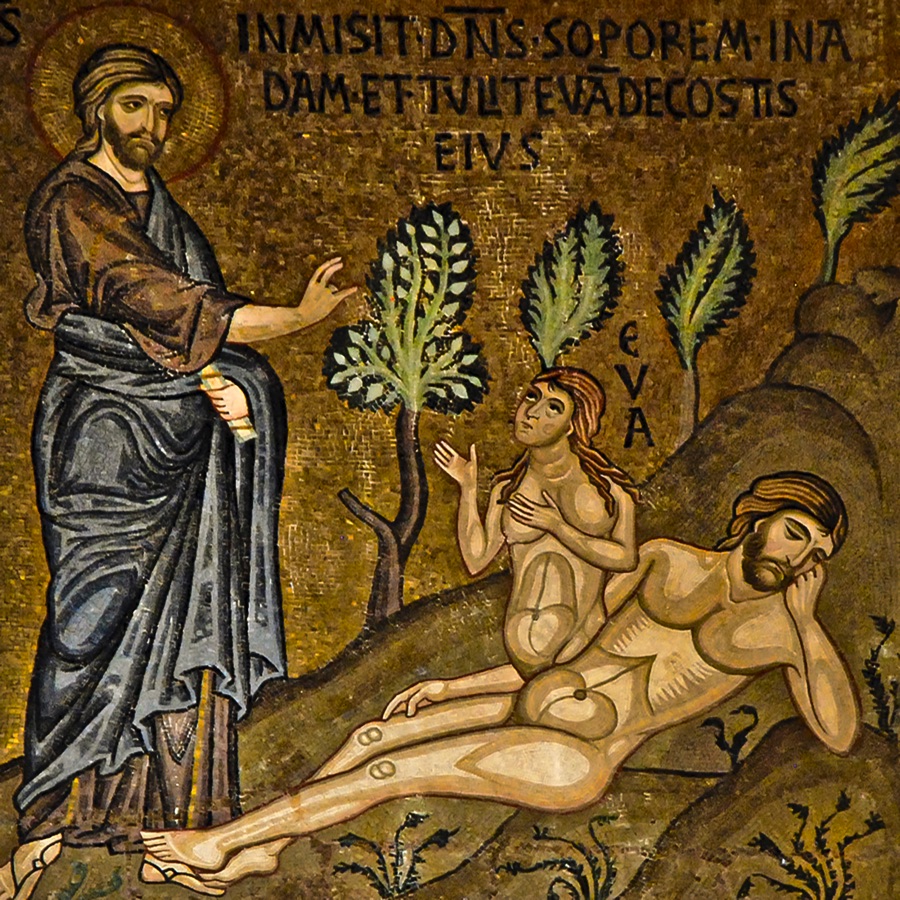 stories of Peter and Paul,
stories of Peter and Paul,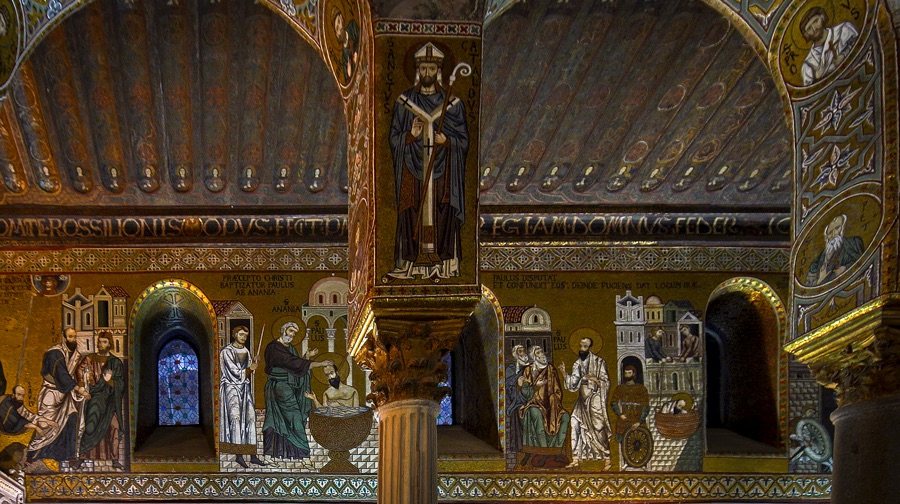 the life of Christ, saints, angels and prophets,
the life of Christ, saints, angels and prophets, 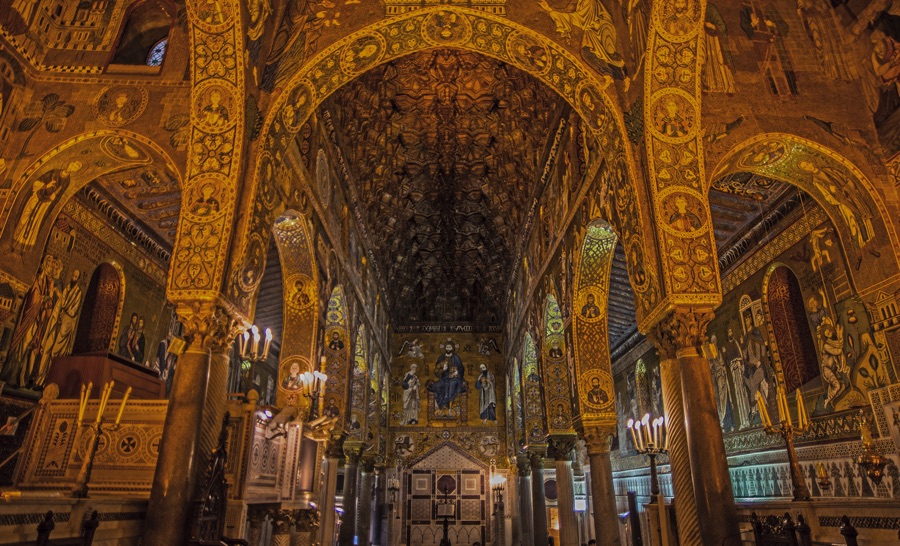 cover the entire surface of the hall, the arches, the vaults and the sanctuary, creating a solemn atmosphere that still lingers inside the church today.
cover the entire surface of the hall, the arches, the vaults and the sanctuary, creating a solemn atmosphere that still lingers inside the church today.
And even the Norman sovereigns could admire and enjoy the splendour of the mosaic cycle from the
royal throne
, aimed at glorifying Christ and the King.
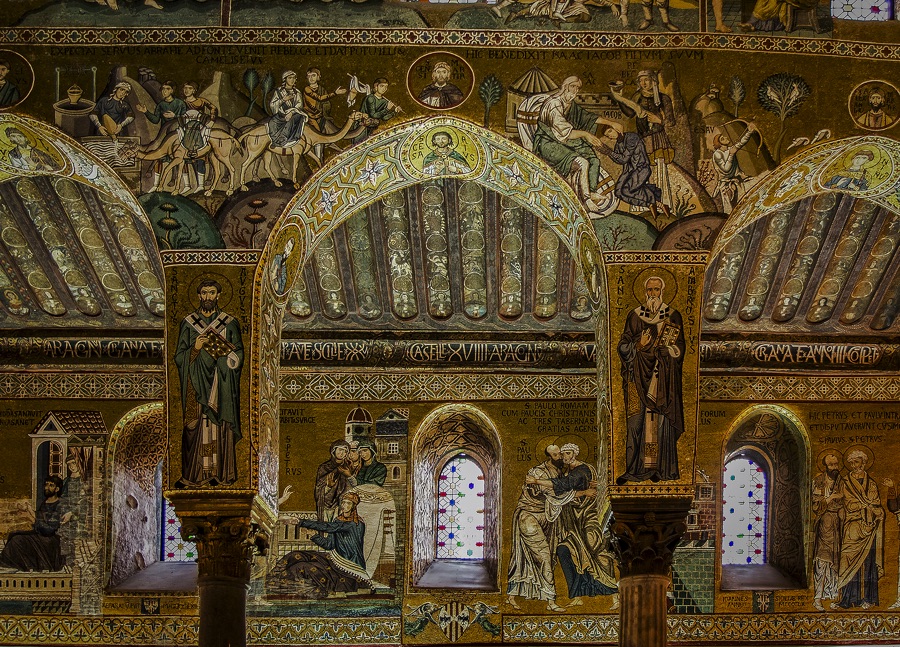 Work began in the presbytery area and continued, at two different times, throughout Roger’s reign until 1154. His successor,
William I
Work began in the presbytery area and continued, at two different times, throughout Roger’s reign until 1154. His successor,
William I
, known as the Bad, who reigned from 1154 to 1166, was responsible for the mosaics of the three aisles. During the reign of
William II
, the Good, from 1166 to 1189, the scene on the western façade of the Chapel was created, with Christ between Saints Peter and Paul, located above the royal throne, decorated in
opus sectile
.
The Palatine Chapel’s mosaics have undergone numerous
restorations
and some renovations and additions, always ordered and supervised by the
Ciantro
of the time.